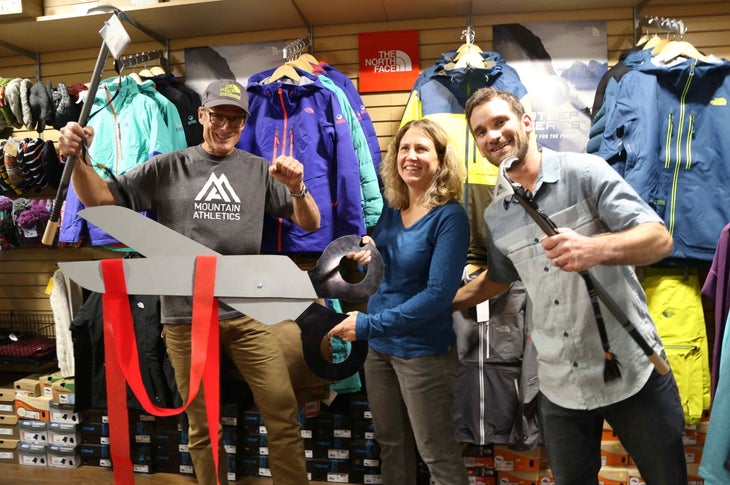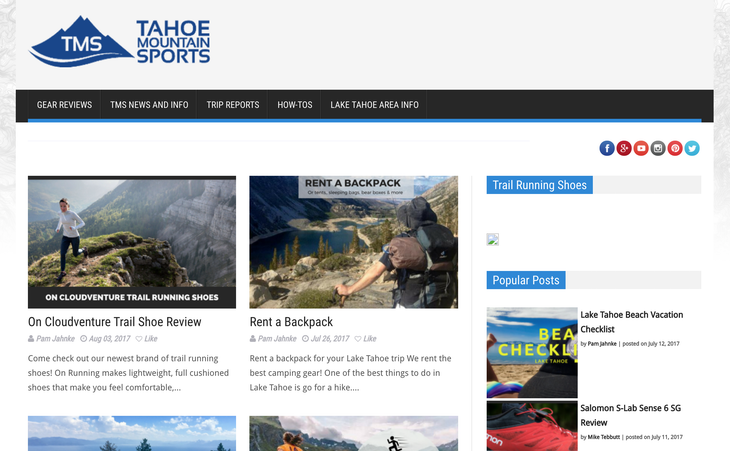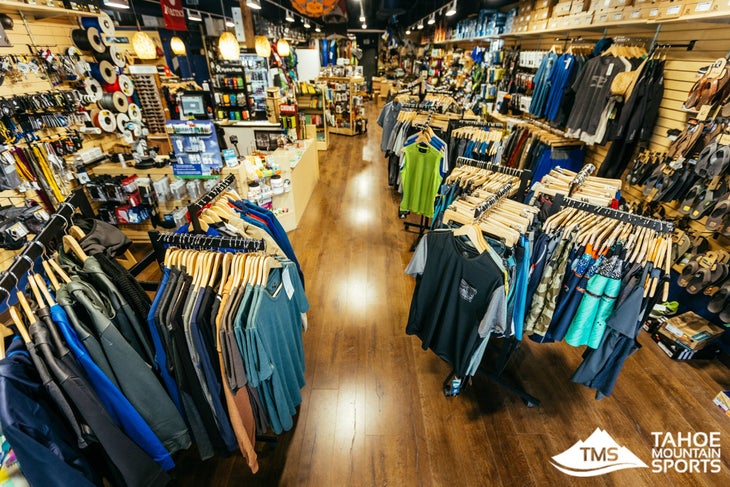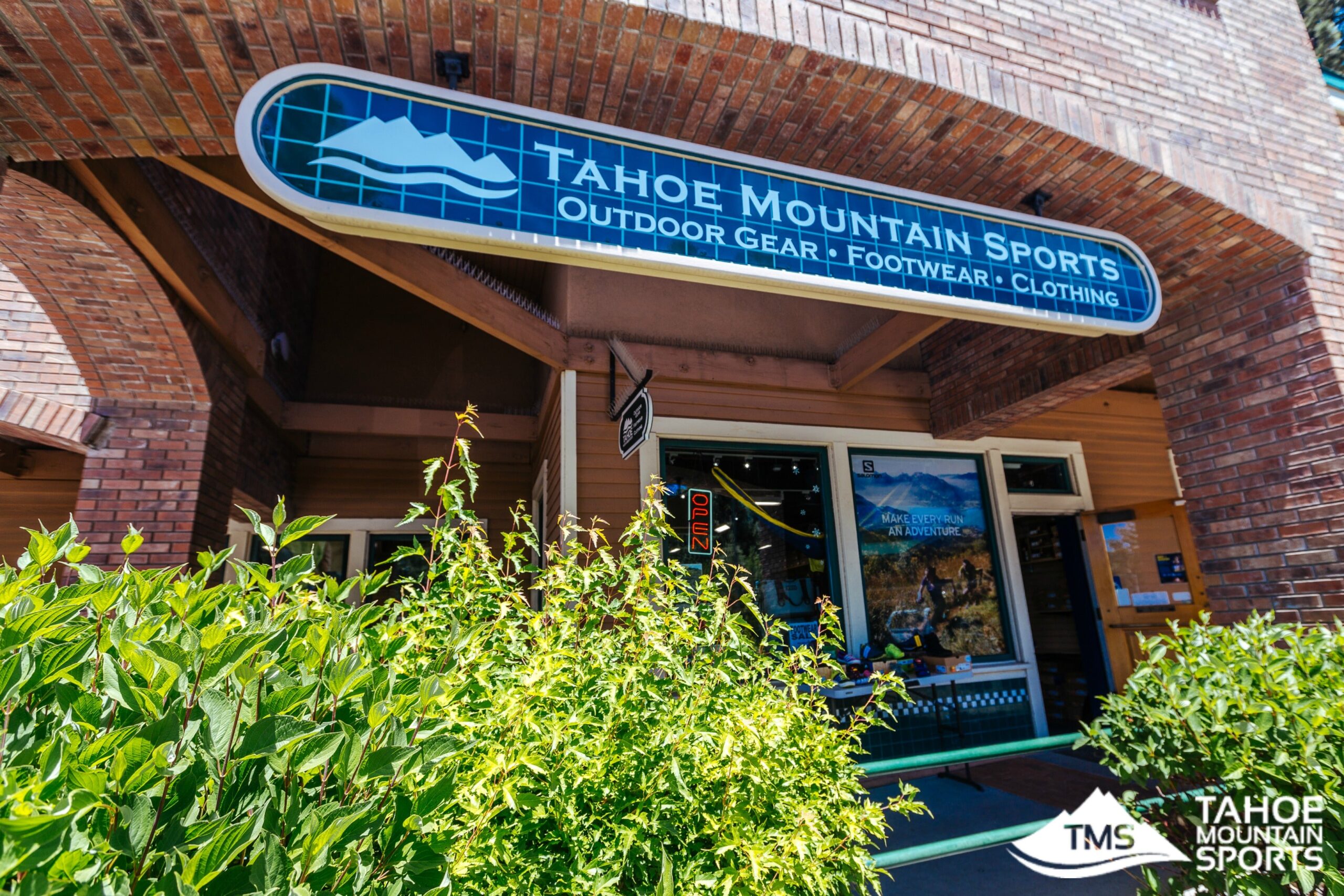For a lot of Dave Polivy’s friends in outdoor specialty retail, online juggernauts like Amazon are seen as a hulking behemoth steamrolling the industry. Many of his contemporaries are reluctant to go anywhere near the e-commerce giant, let alone do business with them.
But Polivy is a realist. “Amazon is about to account for 50 percent of all e-commerce transactions in the world,” he said. “The option to fight Amazon is not realistic.” His solution? Get onboard and embrace that big yellow arrow.

It certainly didn’t start this way for Tahoe Mountain Sports (TMS). The brand was born around a campfire in 2003, when Polivy and two friends, who had all worked together in another outdoor shop, were looking for a change in scenery. “We threw $1,000 each into an idea and said ‘let’s see what happens,’” Polivy said.
For the first three years, TMS was online-only, selling all forms of outdoor gear from hiking, backpacking, and trail running to backcountry ski and snowboard during the winter months. “It was back in the heyday of e-commerce where you could literally just put stuff on websites and watch it sell,” said Polivy. In 2006, Polivy’s wife bought out the two original partners and the couple opened a brick-and-mortar space in Kings Beach, California. After a handful of expansions, they moved in 2014 to their currently location in Truckee, balancing a physical storefront and TMS’s still-running web operation, while looking for ways to link the two halves.

On Harnessing the Power of YouTube…
“Originally the mindset of our blog was to drive SEO for our e-commerce website,” said Polivy. “Back in the days when we were ramping up and e-commerce was a priority, we developed a ton of content to support that business.” Gear reviews, event coverage, trip reports, and more all fed towards products on TMS’s website with the intention of boosting search engine traffic and sales. The articles come from employees, who are allowed to write on company time.

Polivy is also proud of that fact that his shop’s YouTube channel crushes it. Its two million views—spread out across product videos and in-store clinics by brand representatives—make it king among other outdoor specialty retailers on this platform, according to Polivy. “The goal is to provide people with additional product information that they couldn’t just get online,” he said.
But aside from SEO, the blog, and the rest of TMS’s online marketing, he’s also focused on building the shop’s credibility in the community. As one of the area’s newer shops, Polivy originally didn’t have the reputation that his competition enjoyed. But, he said, the older age of his competitors meant they were also more traditional and not immersed as deeply in the tech, which Polivy saw as his advantage. “If we could put out some really cool content like ‘Best things to do with your kids in Lake Tahoe,’ hopefully readers would also come and stop in our store.”

It worked, and continues to. “We have people coming into the store telling us ‘The reason I’m here is because I read this article and I knew you had what I was looking for.’” TMS also has a significant number of blog readers from outside of the local area. As a major tourist community, the hope is that as readers pass through, they’ll be more likely to think of Tahoe Mountain Sports as the place to stop for gear. But Polivy has one more trick up his sleeve to catch long-distance revenue, and it doesn’t completely align with common industry thinking.
On Working with Amazon, Rather Than Fighting It…
In the last two years, declining online sales (undoubtedly due in part to sites like Amazon) forced TMS to stop selling products on its own website (although the blog lives on), so Polivy began looking for other ways to take advantage of the shop’s still-flowing content. Step one involved taking advantage of affiliate selling programs through Amazon, as well as monetizing TMS’s YouTube account.
“If readers don’t live around us and they click [on product links embedded in articles] and order gear from Amazon, we’re still going to get a percentage of that sale,” said Polivy about the strategy. And he’s not worried about losing brick and mortar sales by driving traffic to a competitor. “If they’re already not going to buy it in our brick-and-mortar location and their immediate reaction is to shop on Amazon, we probably weren’t going to get them to begin with.”
In addition, Polivy said, TMS is a third party seller on Amazon, which means TMS sells its own products, like packs and boots, through Amazon’s marketplace, rather than solely linking to Amazon’s own products. Contributing so heavily to Amazon’s business is somewhat controversial in an industry that’s struggling to compete with the brand, but Polivy said not only is it necessary, but it’s also beneficial to the industry as a whole if it’s done right.
As a retailer, the keys to working with Amazon are held by the gear manufacturers. “Independent retailers are at the bottom of the food chain,” Polivy said. “It’s really the vendor’s choice about how they’re going to handle their Amazon business, whether they’re going to deal with Amazon directly, and whether they’re going to consistently enforce their MAP [minimum advertised pricing] policies. Those are the things that we should be fighting for as specialty retailers.”
He also makes a point that retailers should be stocking in-store what they sell on Amazon, which allows retailers like TMS to take back products they can’t sell online and sell them in-store. This keeps stores from needing to drop prices online in order to get rid of product—a killer of MAP-compliant specialty retail.
On Being Resourceful in Social Media…
“Those of us who work and own the store can’t be constantly repping it via social media,” said Polivy. “It’s kind of tacky.” Larger brands are typically the only ones capable of using a fleet of ambassadors, but Tahoe Mountain Sports takes advantage of their own athletes’ knowledge and reach on the small scale. You probably won’t recognize any of them by name—they’re all Tahoe locals—but according to Polivy, TMS sees wide-ranging benefits from its ambassadors. On social media, they actively promote and plug the store in a way that Polivy says he and his staff just can’t do as effectively. The athletes are also vital in product and stocking decisions, regularly testing items and offering feedback to Polivy’s team regarding what to sell and what to take a pass on. Ambassadors also regularly put that information into posts on TMS’s blog.
In the 21st century David vs. Goliath retail environment, Tahoe Mountain Sports has stayed alive by making friends with Goliath.


